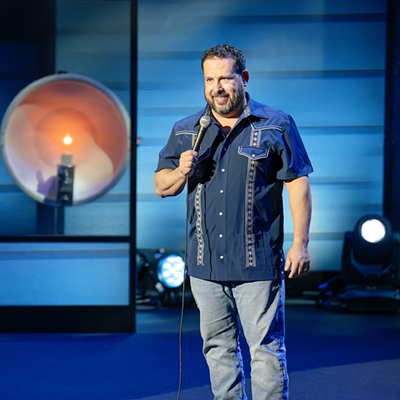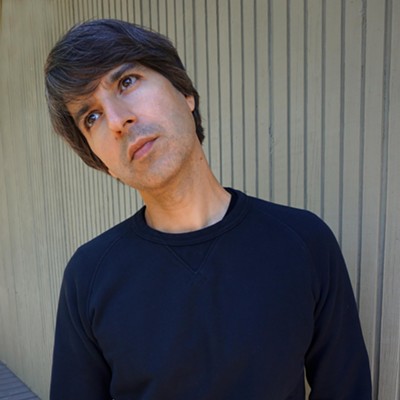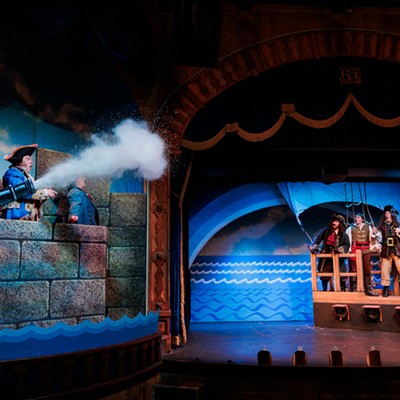Tucson's first inhabitants arrived around 10,000 B.C., according to city of Tucson historical accounts. Between 200 and 1450 A.D., the Hohokam people lived in the region. Around 1540, the area was "discovered" during the Coronado Expedition. In the 1600s, Spanish Jesuits arrived in the area. But it wasn't until 1775 that Tucson was officially established.
To protect the region's people from Apache attacks, Captain Hugo Oconor of the Royal Spanish army established El Presidio de Tucson. It was founded Aug. 20, 1775. The Presidio is believed to have run along what is now Washington Street on the north, Church Street on the east, Pennington Street on the south and Main Avenue on the west. Its adobe walls were reported between 6 and 16 feet tall.
Today the walls are buried beneath the heart of Tucson. The Center for Desert Archaeology has spearheaded projects to search for remnants of the wall. Volunteers discovered portions of the wall in the late 1990s.
To celebrate the 1775 founding of El Presidio de Tucson, the Cultural Exchange Council of Tucson is sponsoring la Fiesta de San Agustín on Saturday, Aug. 27. The fiesta is named after Saint Augustine, the patron saint of Tucson. The free events take place from noon to 9 p.m. at St. Augustine Cathedral, 192 S. Stone Ave. and at Armory Park, 220 S. Fifth Ave. between 12th and 13th streets. For more information, call 792-4806 or visit tucsonfestival.org.
The historical fiesta began in the late 19th century, according to Armando Vargas, chair of la Fiesta de San Agustín committee. "The fiesta would be celebrated for two and a half weeks, from Aug. 28 to Sept. 15 or 16," says Vargas. The celebration began with a mass on Aug. 28, the feast day for St. Augustine. "They had horse races, gunfire at night, roosters buried up to their neck in the ground, people selling food. ... They celebrated the founding of the Presidio."
The historical fiesta ended sometime during the 1920s or 1930s. The contemporary version began in 1983. "Two librarians at the Arizona Historical Society, Margaret Bret-Hart and Susan Petersen, read historical records about the fiesta and asked, 'Why can't we do that again?'" says Vargas. "It wasn't until Margaret contacted the St. Augustine Cathedral that it started again. The dedicated mass began in 1983, and it grew from there."
This year's events begin at noon on Saturday, Aug. 27, with a mass to honor St. Augustine at St. Augustine Cathedral. After the mass, a procession will take place from the cathedral to Armory Park.
Outdoor activities will continue throughout the day. From 1:30 to 2 p.m., Mariachi Milagro is scheduled. At 6 p.m., a second blessing of St. Augsutine takes place. At 6:15 p.m., Ballet Folklórico Mexica performs. And from 7 to 9 p.m., the band Cumbanchero is on tap. Food will be available from noon to 9 p.m.
Inside the dining area, an art exhibition from Raices Taller 222 will be on display from 1 to 6 p.m. International Centers for Human Development will provide foster parent information. "They will try to solicit foster parents," says Vargas. "There's a shortage of foster parents in Arizona. Children get rotated around every few months. Foster parents can provide a stable environment."
A series of lectures will take place in the Quiet Room. At 1:30 p.m., community activist Alva B. Torres will speak about the history of La Placita--the original Plaza de la Mesilla--and its preservation.
"In La Placita Village facing Broadway, there's a gazebo. That used to be the plaza for the original St. Augustine Church. The park that's there now is the historical placita," says Vargas.
At 2:30 p.m., Mary and Lee Malaby will discuss the coming together of the Hispanic and Asian cultures in Tucson. "Mary's great grandfather was from China and migrated to Mexico. Her son, Lee, was the first one to have a drive-in liquor store in Tucson," says Vargas. The Malabys will discuss how the Hispanic and Asian cultures spurred successful businesses in Tucson.
At 3:30 p.m., Dr. Lydia R. Otero of the UA Mexican American Studies and Research Center will discuss key events in the history of St. Augustine Church and La Placita. "This will be part two of what Alva (Torres) talks about," continues Vargas. "The church was founded in the 1780s. It was relocated to Stone Avenue in the late 1880s. It was termite-ridden and had to be demolished. What we see now was erected in 1968."
At 4:30 p.m., community activist Salomon Baldenegro will talk about "community activism in Arizona, diversity and how we can get along well with each other."
La Fiesta de San Agustín wraps up at 9 p.m. with music filling the air, instead of the gunfire of years ago. Although the ways of celebrating St. Augustine and El Presidio de Tucson have changed throughout the years, it's still worthwhile to note that our growing city began in a small Spanish fortress. Its walls may be buried beneath us, but they are not forgotten.







